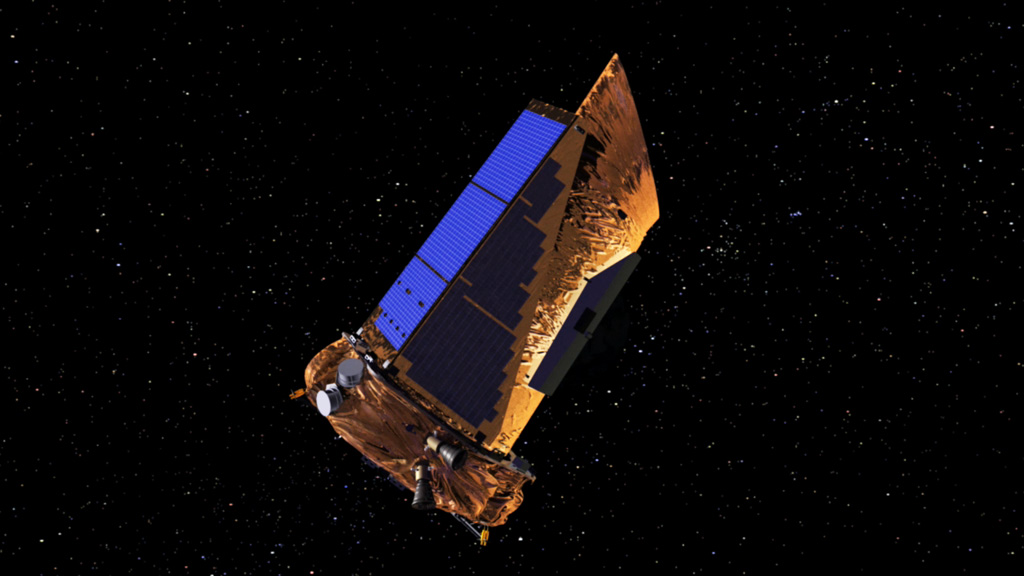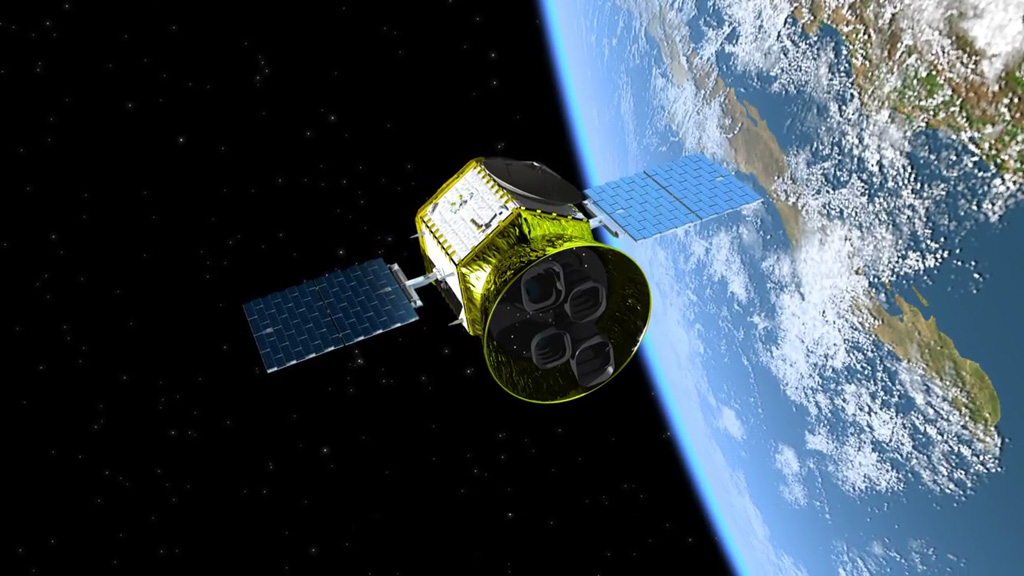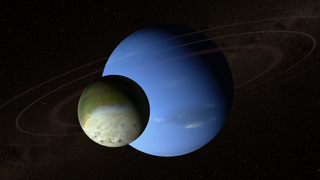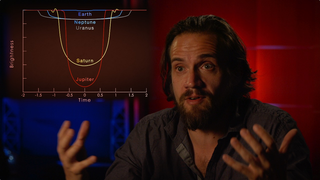Planets and Moons
ID: 12043

Astronomers have used many different methods to discover planets beyond the solar system, but the most successful by far is transit photometry, which measures changes in a star's brightness caused by a mini-eclipse. When a planet crosses in front of its star along our line of sight, it blocks some of the star's light. If the dimming lasts for a set amount of time and occurs at regular intervals, it likely means an exoplanet is passing in front of, or transiting, the star once every orbital period. NASA’s Kepler Space Telescope has used this technique to become the most successful planet-hunting spacecraft to date, with more than a thousand established discoveries and many more awaiting confirmation. Employing this same technique, upcoming missions carrying improved technology will continue the search for new worlds—including possible moons, planetary rings and asteroid groups—by monitoring hundreds of thousands of nearby stars for telltale transits. Watch the video to learn more.



Finding New Worlds




Related Stories
For More Information
Story Credits
Visualizer/Animator:
Scott Wiessinger (USRA)
Lead Video Editor:
Scott Wiessinger (USRA)
Interviewee:
Daniel Angerhausen (ORAU)
Narration:
Scott Wiessinger (USRA)
Francis Reddy (Syneren Technologies)
Narrator:
Scott Wiessinger (USRA)
Lead Producer:
Scott Wiessinger (USRA)
Scientist:
Daniel Angerhausen (ORAU)
Lead Writer:
Francis Reddy (Syneren Technologies)
Scott Wiessinger (USRA)
Lead Video Editor:
Scott Wiessinger (USRA)
Interviewee:
Daniel Angerhausen (ORAU)
Narration:
Scott Wiessinger (USRA)
Francis Reddy (Syneren Technologies)
Narrator:
Scott Wiessinger (USRA)
Lead Producer:
Scott Wiessinger (USRA)
Scientist:
Daniel Angerhausen (ORAU)
Lead Writer:
Francis Reddy (Syneren Technologies)
Please give credit for this item to:
NASA's Goddard Space Flight Center
TESS image courtesy of MIT/Lincoln Laboratory
NASA's Goddard Space Flight Center
TESS image courtesy of MIT/Lincoln Laboratory
Short URL to share this page:
https://svs.gsfc.nasa.gov/12043
Mission:
TESS
Keywords:
SVS >> Astrophysics
SVS >> App
NASA Science >> Planets and Moons
https://svs.gsfc.nasa.gov/12043
Mission:
TESS
Keywords:
SVS >> Astrophysics
SVS >> App
NASA Science >> Planets and Moons









